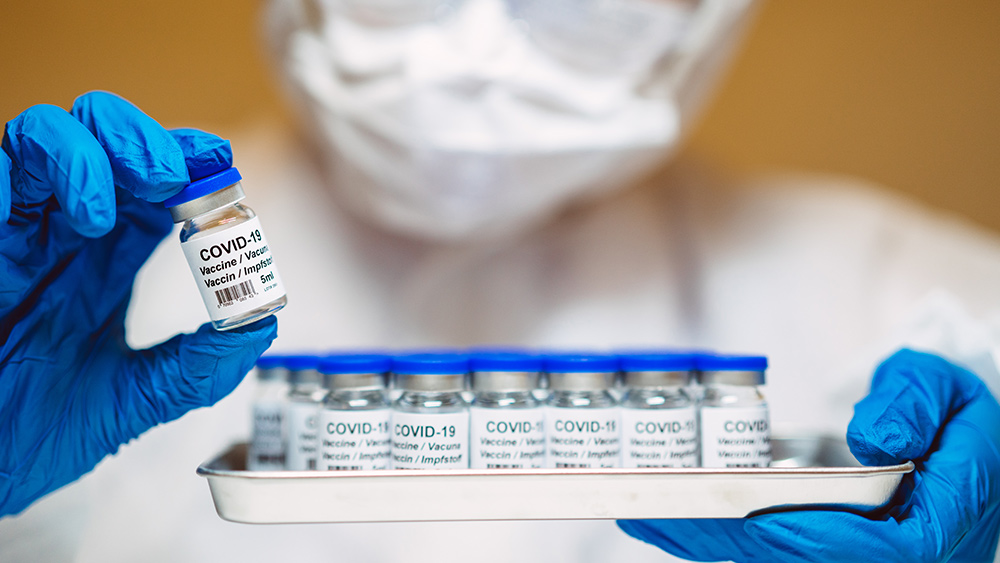 Parler
Parler Gab
Gab
- Dr. Robert W. Malone, an experienced influenza researcher, questions whether the current avian influenza (H5N1) outbreak is a genuine public health threat or a "psyops campaign" aimed at boosting pharmaceutical profits.
- Critics like Dr. Malone point out that the current strategy of widespread testing and the push for mRNA vaccines for both humans and animals may be driven more by profit than genuine public health concerns.
- The debate over bird flu vaccines echoes concerns about previous vaccine overreach, such as the tetanus vaccine, where recommendations may not be evidence-based. Similarly, influenza vaccines are often pushed for reasons beyond public health needs, such as maintaining a profitable market.
- Public trust in government health agencies like the CDC and FDA has declined, with skepticism growing about the motives behind vaccine campaigns and the influence of pharmaceutical companies.
- Dr. Malone and other experts call for a more transparent and evidence-based approach to public health, prioritizing the well-being of the public over corporate profits.
The testing trap: A sampling bias?
The current bird flu narrative hinges on widespread testing, a strategy critics say creates a "sampling bias." Since 1997, there have been 907 reported cases of H5N1 globally, with the current outbreak being the only one subjected to massive testing. Malone argues that the more you test, the more you find—but that doesn’t necessarily mean the findings are clinically significant. "The government is chasing a rapidly evolving RNA virus with a syringe, just like they did with HIV and Covid-19," Malone said. "The more they test, the more 'bird flu' they will find. This 'pandemic' is nothing more than an artifact of their newly developed protocols." The push for mRNA vaccines for poultry, livestock and humans has raised eyebrows, especially given the technology's limitations. Unlike traditional vaccines, mRNA vaccines require extensive freezer storage and have a short shelf life, making stockpiling impractical. Critics argue that this creates a perpetual demand for new vaccines, benefiting manufacturers at the expense of public health.Historical context: Lessons from tetanus and flu vaccines
The bird flu debate echoes longstanding concerns about vaccine overreach. Take the tetanus vaccine, for example. The CDC recommends a booster every 10 years, but research from 2016 suggests that immunity lasts at least 30 years after the standard childhood series. Despite this, the U.S. government has not revised its recommendations, leading to unnecessary boosters and potential adverse effects. Mark K. Slifka, Ph.D., a study author, noted, "We have always been told to get a tetanus shot every 10 years, but actually, there is very little data to prove or disprove that timeline." Similarly, influenza vaccines are often pushed on the public to maintain "warm base manufacturing" and ensure a profitable market. Malone points out that if vaccines were only produced for vulnerable populations, such as the elderly and immunosuppressed, the market would be too small to sustain production costs.Public distrust and the role of Big Pharma
Public trust in government health agencies is at an all-time low, according to a recent KFF poll. Only 61% of adults trust the CDC, down from 66% in 2023, while trust in the FDA has plummeted to 53%. This erosion of trust is fueled by skepticism about the motives behind vaccine campaigns and the influence of pharmaceutical companies. Dr. Leana Wen, a CNN correspondent and former health official, has been criticized for promoting a narrative that the bird flu case fatality rate is over 50%. Malone calls this a "lie," pointing out that the figure is based on a small data set of severely ill patients, not the general population. "Bird flu generally is not tested for when someone has flu symptoms," Malone said. "This has led to the generation of the 890 case reports since 2003. Of those seriously ill patients reported to the WHO, over 50 percent died. This is not an actual case fatality rate of avian flu around the world."A call for transparency and common sense
As the bird flu narrative unfolds, experts like Malone urge the public to question the motives behind widespread testing and vaccine campaigns. With no evidence of human-to-human transmission and a 0% mortality rate in the U.S., the push for mRNA vaccines and lockdowns appears disproportionate to the actual threat. The lessons from tetanus and influenza vaccines highlight the need for a more nuanced approach to public health—one that prioritizes transparency, evidence-based recommendations and the well-being of the public over corporate profits. As Malone aptly puts it, "The need to scare people into more and more vaccines is a dangerous trend." In the meantime, the public is left to navigate a landscape of conflicting information, where the line between genuine health concerns and profit-driven agendas grows increasingly blurred. The question remains: Will we comply, or will we demand accountability from those who claim to protect us? Sources include: Brownstone.org CDC.gov Kff.org60 Minutes faces backlash over fake news scandal promoting left-wing victims narratives
By Lance D Johnson // Share
“The Rise of Tyranny”: How the erosion of separation of powers threatens American democracy
By Belle Carter // Share
China’s maritime dominance poses critical threat to U.S. national security
By Cassie B. // Share
Germany’s war on free speech: Dawn raids and heavy fines for online “insults”
By Willow Tohi // Share
ORCHESTRATED CENSORSHIP: $2.4 million in U.S. government fund to Poynter Institute raises alarms
By Willow Tohi // Share
Governments continue to obscure COVID-19 vaccine data amid rising concerns over excess deaths
By patricklewis // Share
Tech giant Microsoft backs EXTINCTION with its support of carbon capture programs
By ramontomeydw // Share
Germany to resume arms exports to Israel despite repeated ceasefire violations
By isabelle // Share










